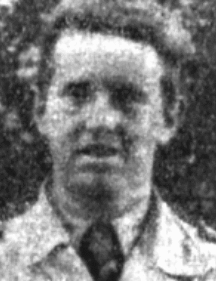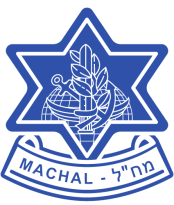 Hans Katzenstein, the son of Simon and Henrietta, was born in Berlin in Germany on 27th September 1916, his parent’s first-born child. He grew up in the bosom of a loving family. His father was a member of the Berlin Municipal Council; in addition, he had also made his research and talents available to other scientists in his fields of expertise: mathematics, physics, and chemistry.
Hans Katzenstein, the son of Simon and Henrietta, was born in Berlin in Germany on 27th September 1916, his parent’s first-born child. He grew up in the bosom of a loving family. His father was a member of the Berlin Municipal Council; in addition, he had also made his research and talents available to other scientists in his fields of expertise: mathematics, physics, and chemistry.
Hans completed high school and was about to attend university, but Hitler’s rise to power prevented this. He immediately changed his plans and began learning about agriculture with a German farmer. He became a Zionist, learned Hebrew and joined the Hechalutz (Pioneer) movement. In 1936, after two years of farming experience, he went to work in Sweden in order to learn even more. He spent 12 years in Sweden in this way, as a peasant, dairyman, chicken breeder and vegetable-grower.
At the beginning of World War II, he got caught up in the war. In the winter of 1939/40, seeking justice, he wanted to volunteer for the Finnish army which was under attack by Communist Russia, but the Hechalutz movement would not release him. He left the movement, but he was not accepted as a volunteer in a foreign army, and he remained at his workplace.
In 1945, after a break of five years, he rejoined Hechalutz, but his Zionism remained theoretical only. At the outbreak of the Jewish struggle for independence, he felt it was his duty to come to the aid of his people.
He arrived in Haifa on 1st May 1948 as a passenger on the immigrant ship “Transylvania.” He was so anxious to be mobilized that he missed the opportunity to visit his younger brother, a member of one of the Negev kibbutzim, and contact between them was temporarily lost.
During the last period of his life, he demonstrated his stubbornness and his absolute faith in his ideals and principles; he had no fear and no concern for his own safety.
His group, defending the most advanced post on Tel-Azaziat, was having difficulty in holding back a strong enemy attack and as they were outnumbered they were given the order to withdraw. Hans refused, declaring “We do not leave any post that is in our hands,” and remained there on his own. He took the Bren light machine gun from a fallen comrade, and carried on firing at the enemy until he was hit and died on 17th July 1948. It was his first battle.
He was buried at Sha’ar Hayishuv, and later, on 3rd March 1950, was re-interred and laid to rest at the Haifa Carmel military cemetery.
Source: Translated from the Yizkor website by Joe Woolf.

